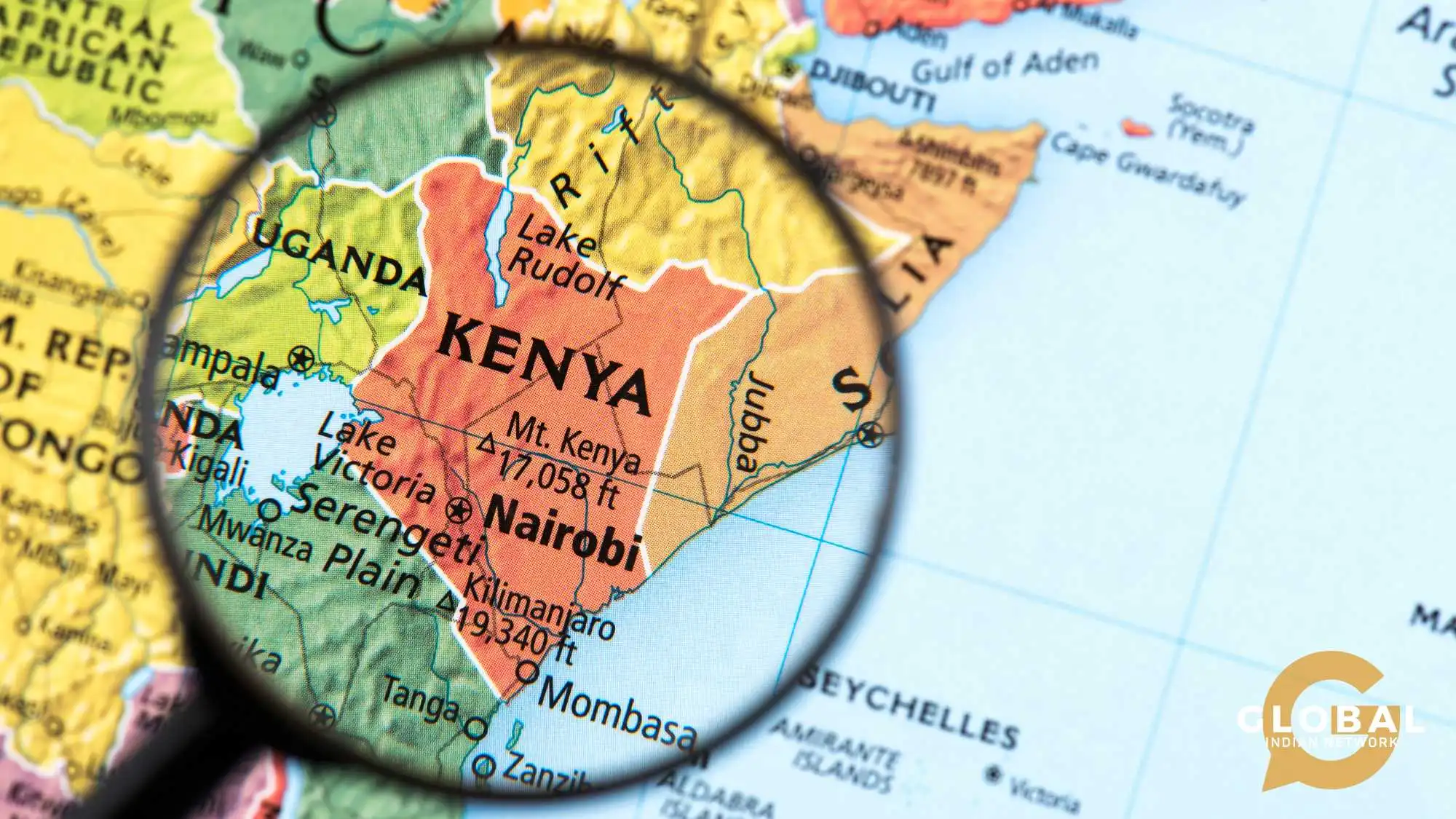When you hear of visiting Kenya, the first thing that comes to mind is the safari. Let us assure you that there is more to it than that. Before we get into the details, let us understand the Kenyan saying – “All cassavas have the same skin but not all taste the same.” In the context of this article, it means that Kenya is unique in its own way though essentially, a part of Africa.
Tourism in Kenya portrays its diverse cultures, breathtaking landscapes, and sustainable tourism, requiring travelers to appreciate its natural wonders to preserve this remarkable destination. Wildlife safaris are not just about observing species; they involve connecting with nature, appreciating biodiversity, contributing to conservation efforts, and ensuring responsible enjoyment of the wild.
Table of Contents
Tourism in Kenya at a Glance
Tourism in Kenya is a significant source of foreign exchange revenue, with diverse attractions including safari-bound, beach, eco-tourism, cultural experiences, and sports tourism. Despite declining tourist numbers in the 1990s, the sector has shown resilience, with an average of 87,000 annual tourist arrivals from 2006 to 2023.
Global Indian Network (GIN) partners with investors to provide local expertise, network with stakeholders, and establish mutually beneficial partnerships, encouraging decision-makers to explore the potential of foreign direct investment in East Africa. GIN has a Memorandum of Understanding (MoU) with the African Tourism Board - Africa's Next Big Thing: The Future of Travel and Investment Opportunities with Cuthbert Ncube.
Wonders of Kenya
Kenya boasts a diverse natural landscape that draws visitors from all over the world.
Mount Kenya: Mount Kenya, Africa’s second-highest mountain, is a beautiful sight with glaciers carving out the throne of Ngai, the ancient high god of the Kikuyu tribe, despite threats from rising temperatures.
Lake Turkana: Lake Turkana in Kenya’s north is a stunning sight with Teleki, a perfectly shaped volcanic cone, and charming villages inhabited by traditional peoples like Turkana, Samburu, Gabbra, and El-Molo.
Image source: Lake Turkana
Kakamega Forest National Reserve: The Kakamega Forest, an ancient forest with 330 bird species, 400 butterfly species, and seven primate species, offers a unique opportunity to explore its paths and its trees, including orchids and parasitic figs.
Watamu: Watamu, situated on Kenya’s Indian Ocean coast, offers stunning white sand beaches, translucent waters, and palm tree-shaded covers for a picturesque exploration experience.
These wonders showcase that tourism in Kenya is filled with rich biodiversity and captivating landscapes, making it a must-visit destination for nature enthusiasts!
Natural Wonders
Safaris and Wildlife: Tourism in Kenya is known for its thrilling wildlife safaris, with national parks like Maasai Mara, Amboseli, and Tsavo providing unique opportunities to witness the Big Five (lion, elephant, buffalo, leopard, and rhinoceros) in their natural habitat.
Great Rift Valley: Kenya’s geological marvel offers stunning landscapes, freshwater lakes, and volcanic peaks, making it a paradise for hikers, birdwatchers, and adventure seekers.
Image source: The Great Rift Valley
Mount Kenya: Mount Kenya, Africa’s second-highest peak, offers stunning views of snow-capped peaks, lush forests, and alpine meadows, attracting climbers and trekkers.
Wildlife Safaris in Kenya
The Maasai Mara National Reserve, known for its Great Wildebeest Migration, offers vast savannas, rolling hills, and abundant wildlife. Amboseli National Park is renowned for its large elephant herds and Mount Kilimanjaro views, making it a photographer’s paradise. Tsavo National Parks (East and West) cover vast landscapes and are home to diverse wildlife, including the elusive black rhino.
Image source: Big 5
The Big Five of Kenya’s wildlife include majestic predators like Lions, elephants in Amboseli and Tsavo, buffalos in national parks, elusive leopards in trees or stalking prey, and both black and white rhinos in Kenya’s protected areas. These majestic animals are often seen lounging or hunting and are a must-visit for tourism in Kenya.
Image source: Reticulated giraffe
Cultural Diversity
Image source: Maasai culture
Ubuntu is an African philosophy that emphasizes interconnectedness, compassion, and shared humanity. It translates to “I am because we are.” Tourism in Kenya can open up the philosophy about Ubuntu by engaging with local communities, such as market vendors, guides, and fellow travelers, by listening to their stories, learning about their daily lives, and appreciating their warmth and hospitality.
Visiting Maasai villages offers a unique glimpse into the semi-nomadic ethnic group’s unique way of life, including their distinctive red clothing, intricate beadwork, and strong cultural identity. Visitors can also witness captivating Maasai dances and learn about traditional huts and elder roles.
Cultural tourism in Kenya showcases its rich heritage through traditional music, dance, and art. Visitors can witness performances showcasing diverse tribal rhythms and modern fusion, and explore local markets for handcrafted jewelry, carvings, and beadwork. The Swahili Coast offers centuries-old architecture, spice markets, and vibrant festivals.
LISTEN TO THIS PODCAST: Embracing Kenyan Identity: Alisha Popat’s Pursuit of Africanising Music
Sustainable Tourism and Conservation
Sustainable tourism in Kenya is a critical focus area for preserving the country’s natural beauty and cultural heritage while ensuring positive economic and social outcomes. Here are some key aspects of sustainable tourism in Kenya:
Ecotourism: Ecotourism Kenya, founded in 1996, is a membership organization promoting responsible tourism practices, focusing on environmental, socio-cultural, and community development. It encourages stakeholders in the tourism industry, promotes sustainable research, and ensures local community empowerment.
Kenya’s ecotourism destinations, including Maasai Mara, Amboseli National Park, Samburu National Reserve, Lake Nakuru National Park, and Tsavo National Park, offer stunning landscapes, rich biodiversity, and unique experiences like wildebeest migration and rare species. Their ecotourism initiative demonstrates a commitment to environmental preservation.
Image source: Angama-mara
Community-Based Tourism: Tourism in Kenya promotes community-based visits, empowering local communities economically and environmentally, offering eco-friendly lodges for visitors to stay, and directly contributing to conservation efforts.
Wildlife Conservation: Kenya is actively working towards wildlife conservation, focusing on protecting endangered species, combating poaching, and promoting responsible tourism.
Maasai Mara Conservancies: Private conservancies near Maasai Mara National Reserve prioritize wildlife protection and community welfare, offering exclusive game drives for visitors to support conservation with tourism in Kenya.
Eco-Friendly Lodges
Explore eco-friendly lodges, which prioritize sustainability by minimizing environmental impact while offering unique and memorable experiences to guests.
Eco-lodges are sustainable structures built with minimal environmental impact, using materials like reclaimed wood, bamboo, or stone. They utilize renewable energy sources like solar panels, wind turbines, and hydroelectric power to reduce fossil fuel reliance. Eco-lodges utilize low-flow fixtures and rainwater harvesting to conserve water resources, minimizing usage and promoting sustainable living practices.
Image source: Community-based tourism
Eco-lodges promote waste reduction through composting and recycling, minimizing single-use plastics, sourcing locally for food and products, reducing transportation emissions, and supporting local communities.
Community-Based Tourism (CBT) in Kenya empowers local communities by providing additional revenue through lodges and campsites, engaging travelers with local culture, and directly contributing to local livelihoods through education, healthcare, and infrastructure development.
Eco-lodges promote wildlife and habitat protection, respect biodiversity, and educate guests about local flora and fauna. They actively participate in conservation initiatives like habitat restoration and wildlife monitoring.
ALSO READ: Tourism in Malawi: From Plateaus to Wildlife Safaris
UNESCO World Heritage Sites
Kenya is home to several remarkable UNESCO World Heritage Sites. Let me share some information about them:
Fort Jesus, Mombasa, Kenya, is a late 16th-century Portuguese fort built in Mombasa in 2011 to control European trade routes in the Indian Ocean, featuring five bastions and extensive walls.
The Kenya Lake System in the Great Rift Valley, a natural site in Kenya, comprises three lakes, Lake Bogoria, Lake Nakuru, and Lake Elementaita, home to a diverse bird population.
Lake Turkana National Park in Kenya is Africa’s largest saline lake, vital for studying fauna and flora. It’s a breeding ground for Nile crocodiles, hippos, and venomous snakes. In 2018, it was listed on the World Heritage in Danger list.
Image source: Lamu Old Town
Lamu Old Town, Kenya’s oldest Swahili settlement, is a culturally significant site built in coral stone and mangrove timber, featuring inner courtyards, verandas, and intricate wooden doors.
Adventure Activities
Details of tourism in Kenya are incomplete without some adventure.
Experience the magic of Hot Air Balloon Safaris over the Maasai Mara, allowing you to witness wildlife from a unique perspective. Witness herds of wildebeest, zebras, giraffes, lions, and elephants bathing in watering holes. The golden hues of sunrise create an enchanting backdrop for your balloon adventure.
Image source: Hot air balloon adventure
Explore Mount Kenya, Africa’s second-highest peak, with its stunning views, alpine lakes, and diverse ecosystems. Hike along the Great Rift Valley, marveling at dramatic cliffs, ancient volcanoes, and freshwater lakes. Don’t miss Hell’s Gate National Park, where you can cycle or walk amidst geothermal wonders.
Tourism in Kenya’s coastline offers various water sports, including snorkeling in coral reefs, diving in shipwrecks, caves, and underwater canyons, and kite surfing along the beaches. Snorkeling in marine reserves like Watamu or Kisite-Mpunguti, exploring shipwrecks and caves, and kite surfing at popular sites like Malindi Marine National Park and Diani Beach, are all enjoyable activities.
LISTEN TO THIS PODCAST: Embracing Kenyanness – A Journey of Identity and Belonging with Vimal Shah
Specific Events or Festivals
Image source: Mombasa carnival
Kenya celebrates various national and regional events and festivals throughout the year, each with its unique cultural significance. Here are some notable ones:
East African Arts Festival: The annual Nairobi festival, the largest in the region, showcases various arts, music, theater, fashion, literature, architecture, sculpture, and traditional crafts, attracting global competitors and spectators.
Easter: Kenya celebrates Good Friday and Easter Monday as public holidays, commemorating Jesus Christ’s crucifixion and resurrection with processions, church services, bonfires, and family feasts.
Eid al-Fitr: September is the Islamic celebration marking the end of Ramadan, involving personal cleansing, communal prayers, charity donations, and feasting with friends and family, particularly in coastal areas.
International Camel Derby and Festival: Since 1990, a camel racing festival in northern Kenya has attracted amateurs and international visitors to participate in the event held on the outskirts of Maralal town.
Mombasa Carnival: In November, Mombasa hosts a carnival celebrating Kenyan culture, featuring artists, dancers, musicians, and tribal people, and showcasing diverse tribal identities across the nation.
Jamhuri Day: On December 12, Kenya commemorates its independence from British rule in 1964, a public holiday known as “Jamhuri,” which signifies national pride and unity in Swahili.
Challenges and Opportunities
Kenya is balancing tourism growth with environmental sustainability, requiring responsible planning and infrastructure development. The country is also focusing on climate change resilience, seeking innovative ways to adapt and mitigate its effects on wildlife and landscapes.
Awards for Tourism in Kenya
Let’s celebrate the outstanding contributions to Kenya’s vibrant tourism sector. Here are some recent award winners that deserve recognition:
Ol Pejeta Conservancy: The conservancy, home to the last two northern white rhinos, is renowned for its innovative conservation efforts and promotes rhino protection and community engagement.
Giraffe Manor: Giraffe Manor, a Nairobi-based boutique hotel, is a conservation success story, offering guests the opportunity to interact with Rothschild’s giraffes, contributing to their preservation.
Image source: Segera Retreat
Segera Retreat: Segera Retreat, located in Laikipia County, is a luxurious, sustainable retreat that has been recognized for its dedication to wildlife conservation, organic farming, and community development.
Angama Mara: Angama Mara, situated on the Great Rift Valley’s edge, boasts stunning Maasai Mara views and is recognized for its responsible tourism practices and community involvement.
Cheli & Peacock Safaris: This tour operator consistently offers exceptional safari experiences, demonstrating a commitment to conservation, ethical practices, and community support.
Remember, these award-winning entities contribute not only to tourism in Kenya but also to the preservation of its natural and cultural heritage.
Recent Award Winners
Here are some recent award winners in the industry of tourism in Kenya:
Ecotourism Kenya’s 2022 Ecowarrior Awards
Basecamp Explorer Kenya and Saruni Camps are recognized for promoting local cultural experiences and supporting tourism enterprises. They initiated a young professional club, a local radio station, Wildlife Tourism College of Maasai Mara, and employed 40% of women guides in the Mara. They also wear uniforms inspired by Maasai culture and dedicate a day a week to wearing Maasai outfits.
Image source: Enjoolata Basecamp Center
The Enjoolata Basecamp Center preserves Maasai cultural artifacts and supports reforestation efforts in Mara. Since 2000, it has been running a reforestation project, conducting awareness-raising activities, and operating the Enjoolata Information Centre. It also provides guidelines for respectful village visits.
Other Notable Winners
Other notable winners include Manda Bay, Leopard Beach Resort and Spa, Ol Pejeta Conservancy, and Sirai House, which are Africa’s leading private island resorts, hotel residences, conservation companies, and luxury private villas.
World Travel Awards 2023
Kenya was named Africa’s Leading Destination, Nairobi as the top business travel destination, and Diamonds Leisure Beach and Golf Resort won two awards in the hotel and resort categories.
Global Indian Network (GIN) partners with investors to provide local expertise, network with stakeholders, and establish mutually beneficial partnerships, encouraging decision-makers to explore the potential of foreign direct investment in East Africa. GIN has a Memorandum of Understanding (MoU) with the African Tourism Board - Africa's Next Big Thing: The Future of Travel and Investment Opportunities with Cuthbert Ncube.
Conclusion
Let’s wrap up our exploration of tourism in Kenya with a heartfelt conclusion.
Eco-lodges provide comfort and contribute to a healthier planet, so choose wisely for a sustainable travel experience. Cultural immersion in Kenya fosters openness, respect, and learning, enhancing appreciation for its rich traditions and the spirit of ubuntu that unites us all. Sustainable tourism in Kenya promotes environmental conservation, economic growth, and cultural enrichment.
Choose guided tours led by knowledgeable rangers for safety and wildlife insights. Stay on designated paths to respect the environment and avoid disturbing animals or damaging vegetation. Use binoculars and a camera to capture wildlife moments without getting too close. Avoid feeding or harming wildlife, as interfering with their natural behavior can harm both animals and ecosystems.
Embark on a wholesome journey with tourism in Kenya as the benchmark for all future wildlife destinations in your life.










[…] countries develop on the pillars of their material resources, manpower, and policy framework. Kenya is no different. Blessed with material treasures, Kenya is moving ahead to become an enviable […]
[…] article explores his inspiring journey of strategic vision, risk-taking, and a deep dedication to Kenya and the East African region. Vimal Shah also serves as an ambassador for the Global Indian […]
[…] a beautiful nation brimming with immense potential, Kenya has been battling a persistent struggle – high inflation […]
[…] Economic diversification is crucial for countries to decrease their reliance on natural resources and foster sustainable growth. […]
[…] and prioritizing macroeconomic stability, structural reforms, and state capability improvements for sustainable growth. Despite improved debt trajectory, uneven reform implementation and high fiscal risks threaten the […]
[…] Tourism in Kenya: From Safari Land to Sustainable Growth […]
[…] However, it is a complex challenge for a place like Suriname, which lacks a finance sector. Let us learn how Suriname is building a development network towards sustainable growth. […]
[…] heavy reliance on the extractive sector, which limits economic diversification and poses risks to sustainable growth. Strengthening governance and enhancing human capital is crucial for improving resilience and […]